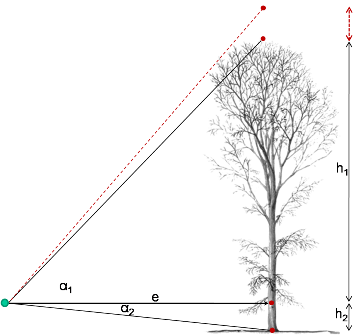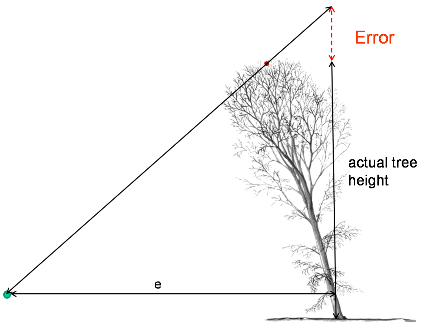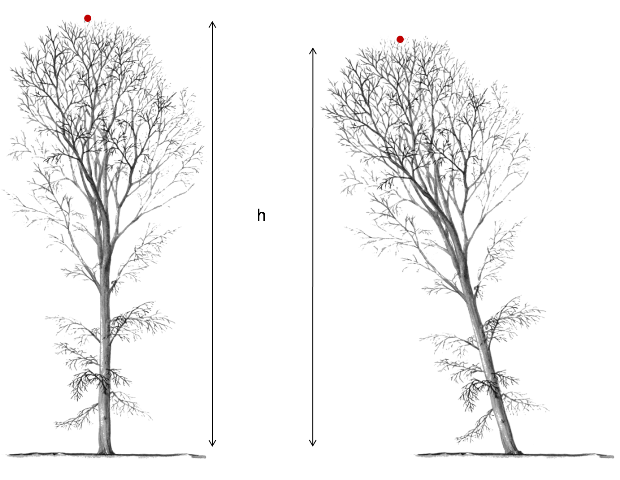Tree height
(→Measurement of tree height) |
|||
| Line 10: | Line 10: | ||
==Measurement of tree height== | ==Measurement of tree height== | ||
| − | A direct measurement of tree height (e.g. by means of a pole) is only feasible for relatively small trees and restricted to the assessment of regeneration or younger plantations. More common is the estimation of tree height based on the [[The trigonometric principle|trigonometric principle]] or the [[The geometric principle|geometric principle]]. Many different [[:Category:Measurement devices]] are available, while most of the modern ones calculate tree height based on measured distances and angles. | + | A direct measurement of tree height (e.g. by means of a pole) is only feasible for relatively small trees and restricted to the assessment of regeneration or younger plantations. More common is the estimation of tree height based on the [[The trigonometric principle|trigonometric principle]] or the [[The geometric principle|geometric principle]]. Many different [[:Category:Measurement devices|measurement devices]] are available, while most of the modern ones calculate tree height based on measured distances and angles. |
==Potential errors in tree height measurements== | ==Potential errors in tree height measurements== | ||
Revision as of 09:11, 3 November 2010
General comments
Total tree height is defined to be the perpendicular distance between the ground level and the level of the top of a tree. In contrast tree length is the distance between the stem foot and the top along the stem axis. Obviously tree height and tree length are identical as long as the tree is growing vertically. For oblique trees, the difference between height and length becomes relevant and length is larger than tree height, depending on the inclination angle.
Total height is of interest to characterize a stand for example by determining the yield class or to estimate tree volume or tree biomass. If interest is in commercial volume, it is recommendable to also measure the commercial tree height. This is the height at the stem up to which logs that can be cut are considered as "commercial". The understanding of what is commercial is depending on the wood markets and the conventions used there. Commercial height needs to be defined according to the defined criteria.
| sorry: |
This section is still under construction! This article was last modified on 11/3/2010. If you have comments please use the Discussion page or contribute to the article! |
Measurement of tree height
A direct measurement of tree height (e.g. by means of a pole) is only feasible for relatively small trees and restricted to the assessment of regeneration or younger plantations. More common is the estimation of tree height based on the trigonometric principle or the geometric principle. Many different measurement devices are available, while most of the modern ones calculate tree height based on measured distances and angles.
Potential errors in tree height measurements
In general errors in the determination of tree heights can have different reasons:
- wrong distance measurement (eventually not the correct horizontal distance),
- Wrong measurement of angles,
- Tree top is not visible or misinterpreted,
- misinterpretation of tree height in case of oblique trees.

|

|
